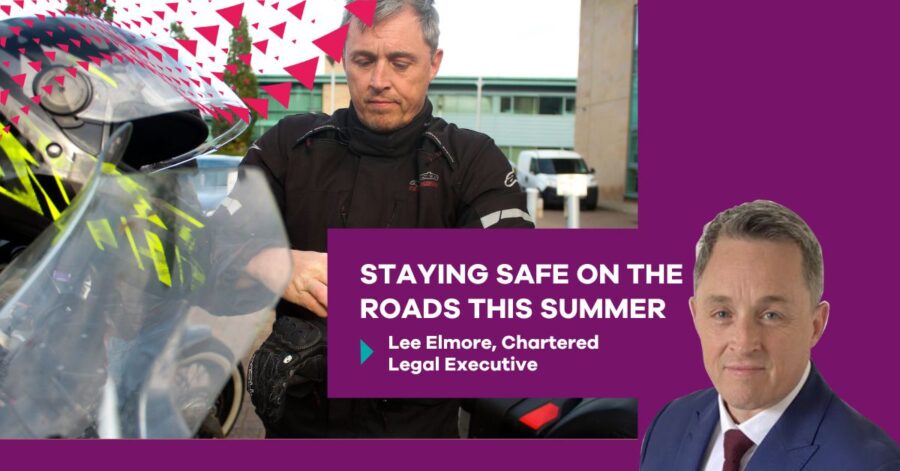Biker to biker – staying safe on the roads this summer


Serious Injury team member, Lee Elmore, shares a few tips for fair weather riding now summer is approaching.
We previously considered the pros and cons of riding in the winter and the precautions to take in terms of riding style, bike maintenance and your kit. The same applies to spring and summer riding. When riding in the spring and summer – if we ever get one – it’s a whole new ball game as to what we need to be conscious of.
Firstly, the traffic is usually much denser, particularly on sunny weekend mornings when it’s tempting to haul yourself out of bed and take a jaunt into the countryside, looking for that ever-elusive A-road experience. Sunday drivers, camper vans, farm traffic, cyclists and other bikers are all out in force – farm traffic can be especially tricky, trying to come out of fields with large tractors, etc, and the inevitable trail of sludge that they leave on the road surface in their wake, which all bikers will know can be tricky to negotiate.
The road surface might be in a bad state of repair from the incessant rain over the past few months so beware of pot-holes the size of dustbin lids!
Because of the increased traffic and likelihood of worn or degraded road surfaces, coupled with the fact that your pride and joy might have been hidden away from the elements, unused in your shed or garage for a few months, bike maintenance is just as important as it is in the winter. Check your tyres for anything that’s penetrated or punctured them, chain cleaning and/or lubrication is a must, make sure your brakes and all electrics work, check for any fluid leaks on forks or rear suspension that doesn’t look right. Remember – POWER.
P = petrol – obvious really! Make sure you have some!
O = oil/lubricants – check the level.
W = water/coolant (if your bike is water-cooled of course!)
E = electrics – check all your lights, switches, horn, etc are all working.
R = rubber – check the pressures and general condition of your tyres in line with manufacturers spec.
A riding kit is equally important in spring and summer. Firstly, make sure you’re protected. We’ve all seen people riding scooters and bikes with flip-flops, shorts and t-shirts in Spain but that look won’t last, particularly if they come off and need to have skin grafts for the next few years! Wearing protective gear in spring/summer is essential to protect you, should the worst happen. Proper motorcycle boots or armoured footwear, protective textile trousers and jacket or, if the weather permits, Kevlar-weave jeans and leather jacket. Gloves remain just as important. Put your winter gloves in the cupboard for next winter and buy some that won’t make your hands overheat. Goretex or other waterproof membrane gloves are the best but make sure that they fit right and, as always, get the best you can afford. In my experience gloves are very often overlooked in the order of importance when it comes to riding kit but, in reality, after your helmet, should be the first consideration. If you come off, for whatever reason, the first contact with the road will invariably be with the palms of your hands as you reach out to protect yourself. Why leave cheap kit to chance of protecting you?
Given the changeable weather, particularly in spring, don’t get caught out without waterproofs or a spare pair of gloves as riding home from a day out will be thoroughly miserable and, as with winter riding, impair your concentration if your body is cold.
The thing that even seasoned bikers should do is to ease back into riding, remember and be conscious of your limits and the limits of your bike and get your mind and body back into the swing of what to do (and not to do!) to get the best out of your ride and to stay safe. Get your muscle memory back, get used to being in the saddle for long periods and getting your concentration levels sharp again.
As always, keep it shiny side up and enjoy!